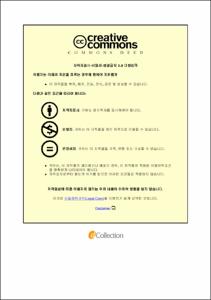SiC 단결정 성장로의 온도구배 제어에 있어 흑연 도가니 방사율에 따른 영향
- Abstract
- SiC-based power semiconductors have excellent characteristics such as higher bandgap, thermal conductivity, and melting point than conventional Si, so SiC can be operated in harsher environments. SiC research material that can be replaced Si in high frequency and high-power areas. To replace the Si, it is necessary to solve the problem of high production cost and for this purpose, high efficiency and high quality of SiC ingot production is required. SiC ingot manufacturing methods are various, but they are generally used to change the phase from gas or liquid to solid, it is an important point to control the temperature of growth furnace especially around the crystal growth area. The heat inside the growth furnace is transmitted by conduction, convection, and radiation, which is determined by the complex influence such as crystal growth furnace design, insulation layout and thickness, and fluid flow. In this study, we analyzed the temperature distribution according to the roughness of graphite crucible in SiC single crystal growth furnace. First, the computer simulations showed the effect on the temperature distribution as the emissivity of the graphite crucible changed. In the double crucible structure, when the emissivity of the inner wall of the outer crucible was increased, the temperature of the inner crucible was increased under the same current and voltage conditions. Based on the simulation results, the heating test was carried out using a crucible which increased the Ra value of the inner wall of the external crucible. The results show that as the Ra value of the external crucible increases, the temperature of the internal crucible increases, which is consistent with the simulation results. It was confirmed through simulation that increasing the emissivity of the inner wall of the crucible would be positive for single crystal growth due to the effect of lowering the supersaturation. When crystal growth was carried out using a crucible with an increased emissivity of the inner crucible, the results are as follows. Due to the relatively low supersaturation conditions, the growth rate was reduced, but it was possible to grow crystals with high crystal quality, low polytype conversion, and good crystal surface shape. The simulation confirmed that higher emissivity value, stronger effects. Also, the method of controlling radiant heat through roughness may be useful for other processes requiring fine temperature control.
SiC 기반 전력반도체는 기존 Si 대비 높은 밴드갭, 열전도율, 융점 등에서 우수한 특성이 있어 보다 혹독한 환경에서 구동이 가능하고 특히 고주파수, 고 전력 영역에서 Si를 대체할 수 있는 소재로 많은 연구가 진행 중인 소재이다. Si의 영역을 대체하기 위해서는 가장 큰 문제점인 생산단가가 높다는 문제점을 해결해야 하고 그것을 위해 SiC 잉곳제작의 고효율화, 고품질화가 필요한 실정이다. SiC 잉곳 제작방법은 다양하게 있지만, 기본적으로 기체 또는 액체에서 고체로 상 변화하는 현상을 이용하기 때문에 성장 로 내부 공급물질 영역의 온도와 결정성장부의 온도를 제어하는 것이 중요한 포인트라고 할 수 있다. 성장 로 내부의 열은 전도, 대류, 복사에 의해서 전달되며 이는 결정성장로 디자인, 단열재 배치 및 두께, 유체 흐름 등에 의해 복합적인 영향을 받아 결정된다.
본 연구에서는 SiC 단결정 성장로에서 흑연 도가니의 복사열 전달을 도가니 표면 거칠기를 달리하여 제어하였고 그에 따른 영향을 분석해 보았다. 우선 컴퓨터 시뮬레이션을 통하여 SiC 성장로에서 흑연 도가니의 방사율이 달라짐에 따라 온도분포에 끼치는 영향을 확인해 보았다.
이중 도가니 구조에서 외부 도가니 내벽의 방사율을 증가시켰을 때 동일 전류, 전압 조건에서 내부 도가니의 온도가 증가하여 성장로의 효율이 증가하는 것을 확인하였다. 시뮬레이션 결과를 바탕으로 외부 도가니의 내벽의 Ra 값을 증가시킨 도가니를 사용하여 Heating test를 진행하였다. 결과는 외부 도가니의 Ra 값이 증가할수록 내부 도가니의 온도가 높아졌으며 이는 시뮬레이션 결과와 일치한다.
내부 도가니 내벽의 방사율을 증가시켰을 때에는 용액의 결정 성장부의 과포화도가 낮아지는 효과로 인하여 단결정성장에 긍정적일 것임을 시뮬레이션을 통하여 확인하였다. 마찬가지로 내부 도가니 내벽의 방사율을 증가시킨 도가니를 이용하여 결정성장을 진행하였을 때 결과는 다음과 같다. 상대적으로 낮은 과포화도 조건으로 인해 성장 속도가 감소하였지만 높은 결정품질, 낮은 폴리타입 변환, 우수한 결정 표면 형상을 가지는 결정을 성장할 수 있었다.
시뮬레이션 상에서 방사율 수치가 높으면 높을수록 앞서 언급한 효과들이 더 강해지는 것을 확인하였다. 실제 환경에서 흑연 도가니의 방사율을 흑체에 근접하게 높일 방법에 대한 추가적인 연구가 필요할 것이며 단결정 성장 로 외에도 정밀한 온도제어가 필요한 공정에 적용할 수 있는 방식이다.
- Issued Date
- 2020
- Awarded Date
- 2020. 2
- Type
- Dissertation
- Publisher
- 부경대학교
- Affiliation
- 부경대학교 대학원
- Department
- 대학원 신소재시스템공학과
- Advisor
- 임영수
- Table Of Contents
- 제 1 장 서론 1
제 2 장 이론적 배경 4
2.1 SiC 개요 4
2.2 SiC 단결정 성장법 13
2.2.1 PVT 15
2.2.2 CVD (HT-CVD) 16
2.2.3 TSSG 18
2.3 단결정 성장 메커니즘 21
2.4 다중물리해석 모델링 26
2.4.1 전자기장 해석 29
2.4.2 유체 해석 31
2.4.3 열전달 해석 36
2.5 복사 열전달에 있어 표면 거칠기의 영향 38
2.5.1 방사율 41
2.5.2 표면 형상과 방사율 43
제 3장 실험방법 46
3.1 다중물리해석 46
3.2 승온 성능 평가 49
3.3 결정성장 54
3.4 결정특성평가 63
3.4.1 폴리타입 변환 분석 63
3.4.2 잔류응력 분석 64
3.4.3 결정품질 분석 65
제 4 장 결과 및 고찰 67
4.1 다중물리해석 67
4.2 승온 성능 평가 74
4.3 결정성장 76
4.4 특성평가 79
4.4.1 폴리타입 변환 분석 79
4.4.2 결정품질 분석 81
4.4.3 잔류응력 분석 83
제 5 장 결론 86
참 고 문 헌 88
국 문 요 약 95
- Degree
- Master
- Files in This Item:
-
-
Download
 SiC 단결정 성장로의 온도구배 제어에 있어 흑연 도가니 방사율에 따른 영향.pdf
기타 데이터 / 4.25 MB / Adobe PDF
SiC 단결정 성장로의 온도구배 제어에 있어 흑연 도가니 방사율에 따른 영향.pdf
기타 데이터 / 4.25 MB / Adobe PDF
-
Items in Repository are protected by copyright, with all rights reserved, unless otherwise indicated.